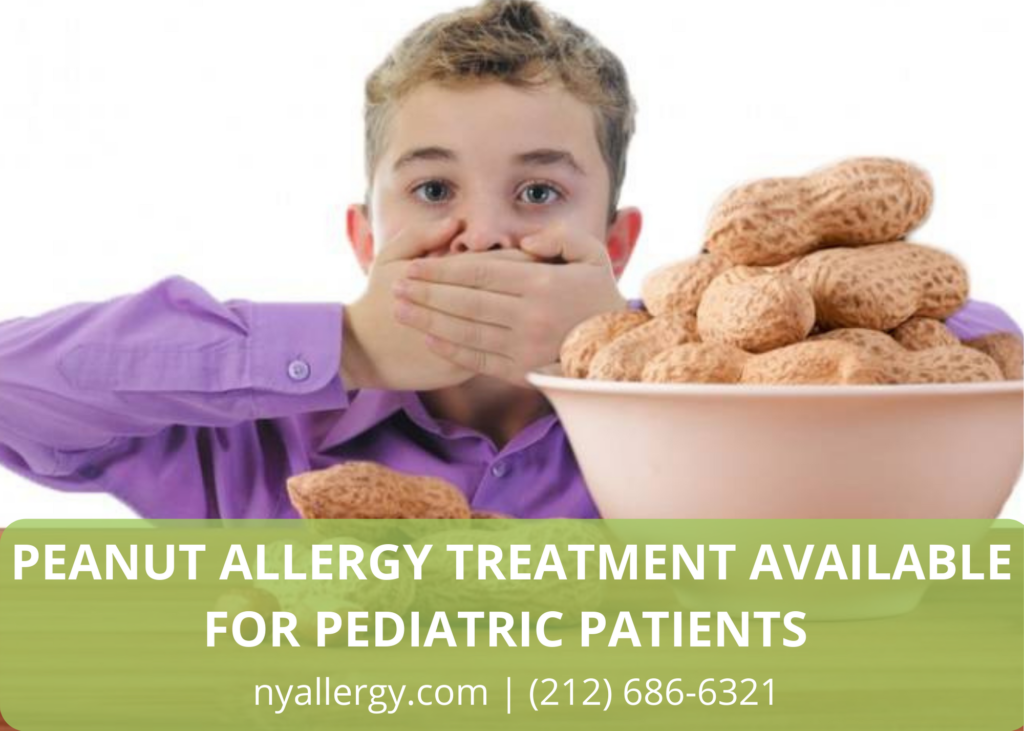About 1.2 million children and teens in the U.S. have a peanut allergy. Until now, there hasn’t been an effective treatment to help manage this allergy other than avoidance. Earlier this year, the FDA approved an oral immunotherapy treatment to help reduce the severity of allergic reactions to peanuts, including anaphylaxis. This treatment, called PALFORZIA, is now available at NY Allergy & Sinus Centers. Treatment with PALFORZIA gives kids allergic to peanuts controlled exposure to consistent, precise amounts of peanut protein every day. This helps to decrease their sensitivity to small amounts of peanuts over time.
PALFORZIA has been proven to work for many children, but it is not for everyone. There are side effects that may include: stomach pain, vomiting, feeling sick, itching or burning in the mouth, throat irritation, cough, runny nose, sneezing, throat tightness, wheezing, shortness of breath, itchy skin, hives, and/or itchy ears. Here is what else you need to know about the FDA peanut allergy treatment.
PALFORZIA Is Currently Only Available For Children
While peanut allergy affects both children and adults, PALFORZIA is currently only available for children ages 4 to 17. The initial dose escalation can only begin within this age range. However, dosing and maintenance may be continued into adulthood if deemed necessary by your allergist. The allergists at NY Allergy & Sinus Centers have extensive knowledge and experience in treating pediatric patients.
Before considering PALFORZIA, a confirmed diagnosis is needed before treatment can begin. This includes allergy testing and an examination of the patient’s medical history. PALFORZIA is not available for children with uncontrolled asthma or eosinophilic esophagitis (EoE) disease. Be sure to disclose all of your child’s medical conditions during the consultation.
Patients Must Enroll In Risk Evaluation and Mitigation Strategy (REMS)
Because of the severe allergic reactions that may occur after taking PALFORZIA, the FDA peanut allergy treatment is available only through a restricted program called the PALFORZIA REMS. Requirements of the REMS include:
1. The prescribing physician and patient must be enrolled in the REMS prior to initiation of treatment.
2. The initial dose escalation and the first dose of each up-dosing level must be administered in a certified healthcare setting, like NY Allergy & Sinus Centers.
3. Epinephrine must always be immediately available to patients. Our Board Certified Allergists will train all patients to administer epinephrine from an auto-injector.
4. Pharmacies or distributors must be certified with the REMS and dispense PALFORZIA only to certified healthcare settings or to patients who are enrolled in the REMS.
If your child cannot agree to the terms of the REMS, talk with our allergists to determine other ways to help manage peanut allergy.
Peanut Allergy Treatment Should Be Used In Conjunction With A Peanut-avoidant Diet
Although PALFORZIA is effective in reducing the severity of peanut allergy reactions, it is not for the emergency treatment of allergic reactions. Patients should continue to avoid peanuts when possible. It’s also essential for children to carry epinephrine to treat serious allergic reactions in the event of a serious allergic reaction. Book an appointment at NY Allergy & Sinus Centers to receive an EpiPen or Auvi-Q, and learn more about the FDA peanut allergy treatment.

